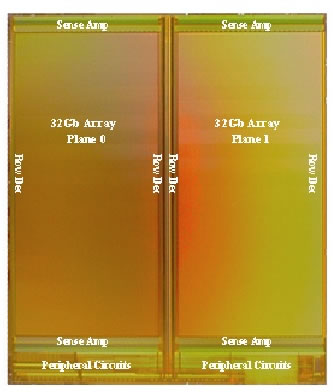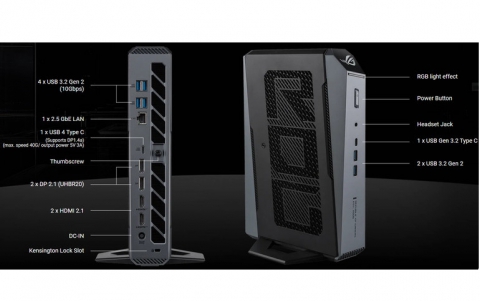
SanDisk to Mass Produce 64GB Memory Cards
SanDisk on Tuesday said it will begin mass producing flash memory cards with an unprecedented 64GB of storage capacity.
The company developed the high-performance card in collaboration with Toshiba using 43-nanometer process technology. In what the firms described as a breakthrough, cells in the "X4" cards hold two to four times the amount of data as is typical in the industry.
SanDisk's 4-bits-per-cell (X4) flash memory enables 64-gigabit (Gb) memory in a single die . SanDisk has also produced an advanced X4 controller, which is necessary to effectively manage the complexities and performance requirements of X4 memory. The X4 controller utilizes a first-of-its-kind error correcting code (ECC) scheme specifically developed for use in storage systems, and tailored to support the 16 levels of distribution needed for 4-bits-per-cell. The X4 memory chip combines with the X4 controller chip in a multi-chip package (MCP) to provide an integrated storage solution.

The new 43nm 64Gb X4 chip is boasting a 7.8MB/sec memory write performance that is comparable with current multi-level cell technologies.
SanDisk is the world's largest supplier of flash storage cards and plans to bring X3 cards to market by mid-year.
A premium memory card currently available from SanDisk can hold 32GB of data while 16GB cards are a mainstay of its line.
32nm NAND technology
SanDisk and Toshiba Corporation also announced the co-development of multi-level cell (MLC) NAND flash memory using 32-nanometer (nm) process technology to produce a 32-gigabit (Gb) 3-bits-per-cell (X3) memory chip.
The 32Gb X3 on 32nm technology is the smallest NAND flash memory die reported so far, able to fit into the fingernail-sized microSD memory card format that has enjoyed widespread adoption in mobile phones and other consumer electronics devices. The 32nm 32Gb X3 is the highest density microSD memory die in the world, providing twice the capacity of a microSD chip on 43nm while still maintaining a similar die area. Advances in 32nm process technologies and in circuit design significantly contributed to a 113mm2 die-size while SanDisk?s patented All-Bit-Line (ABL) architecture has been a key enabler to maintain a competitive X3 write performance.
Production for the 32nm 32Gb X3 is expected to begin in the second half of 2009.

SanDisk's 4-bits-per-cell (X4) flash memory enables 64-gigabit (Gb) memory in a single die . SanDisk has also produced an advanced X4 controller, which is necessary to effectively manage the complexities and performance requirements of X4 memory. The X4 controller utilizes a first-of-its-kind error correcting code (ECC) scheme specifically developed for use in storage systems, and tailored to support the 16 levels of distribution needed for 4-bits-per-cell. The X4 memory chip combines with the X4 controller chip in a multi-chip package (MCP) to provide an integrated storage solution.

The new 43nm 64Gb X4 chip is boasting a 7.8MB/sec memory write performance that is comparable with current multi-level cell technologies.
SanDisk is the world's largest supplier of flash storage cards and plans to bring X3 cards to market by mid-year.
A premium memory card currently available from SanDisk can hold 32GB of data while 16GB cards are a mainstay of its line.
32nm NAND technology
SanDisk and Toshiba Corporation also announced the co-development of multi-level cell (MLC) NAND flash memory using 32-nanometer (nm) process technology to produce a 32-gigabit (Gb) 3-bits-per-cell (X3) memory chip.
The 32Gb X3 on 32nm technology is the smallest NAND flash memory die reported so far, able to fit into the fingernail-sized microSD memory card format that has enjoyed widespread adoption in mobile phones and other consumer electronics devices. The 32nm 32Gb X3 is the highest density microSD memory die in the world, providing twice the capacity of a microSD chip on 43nm while still maintaining a similar die area. Advances in 32nm process technologies and in circuit design significantly contributed to a 113mm2 die-size while SanDisk?s patented All-Bit-Line (ABL) architecture has been a key enabler to maintain a competitive X3 write performance.
Production for the 32nm 32Gb X3 is expected to begin in the second half of 2009.






















